We've curated some of our top 'Back to School' posts to help you plan and launch your writing workshop.![]()
Viewing: Blog Posts Tagged with: community, Most Recent at Top [Help]
Results 26 - 50 of 446
Blog: TWO WRITING TEACHERS (Login to Add to MyJacketFlap)
JacketFlap tags: community, writing workshop, back to school, first day, Add a tag
Blog: TWO WRITING TEACHERS (Login to Add to MyJacketFlap)
JacketFlap tags: community, environment, writing workshop, Add a tag
You might be so completely used to your classroom arrangement that it seems normal to you -- but it maybe could be better.![]()
Blog: The Open Book (Login to Add to MyJacketFlap)
JacketFlap tags: community, Book News, writing advice, writing contests, Diversity, writing, writers, Immigration, writing awards, Lee & Low Likes, New Voices/New Visions Award, Diversity, Race, and Representation, Guest Blogger Post, american immigration council, celebrate america, celebrate america writing contest, claire tesh, Add a tag
LEE & LOW BOOKS has two writing contests for unpublished authors of color: the New Voices Award, for picture book manuscripts, and the New Visions Award, for middle grade and young adult manuscripts. Both contests, which are now open for submissions aim to recognize the diverse voices and talent among new authors of color who might otherwise remain under the radar of mainstream publishing.
In this guest post, we wanted to highlight another groundbreaking writing contest that’s bringing attention to marginalized voices and fostering a love of writing in students: the Celebrate America Writing Contest run by the American Immigration Council. Coming into its 19th year, the Celebrate America Writing Contest for fifth graders has been bringing attention to the contributions of immigrants in America through the eyes and pens of our youngest writers.
In this guest post, Claire Tesh, Senior Manager of Education at the American Immigration Council, discusses the mission of the Celebrate America Writing Contest and how it has helped to shape the immigration narrative.
It is impossible to escape the negative vitriol and hateful rhetoric around the issue of immigration that dominates the headlines, talk radio, popular culture, and in some cases the dinner table. In an effort to educate children and communities about the value of immigration to our society The American Immigration Council teams up with schools and community groups to provide young people the resources and information necessary to think critically about immigration from both a historical and contemporary perspective, while working collaboratively and learning about themselves and their communities.
The American Immigration Council developed “Celebrate America,” an annual national creative writing contest for fifth graders, because they are at the age where they are discovering their place in the world both locally and globally. They are also finding their own voice, opinions and ideas through writing, creating and sharing. Students at this age start making sense of current events; they have a better working knowledge of basic history, and have a sense of global awareness.
Thousands of Entries
“Celebrate America” began 19 years ago with just a couple dozen entries. Today it has grown to over 5,000 entries annually! Since 1997 a total of close to 75,000 students have participated in two dozen cities, in nearly 750 schools and community centers across the nation.
As the lead on the contest since 2006, I have read thousands of entries and have attended numerous events featuring the writers. It is difficult to pick just one example, but in 2008 the winning entry America is a Refuge really showed how much a 10-12 year old can comprehend about the issue. That year, the winner, Cameron Busby, explained to a reporter from the Tucson Citizen that “I want to be a horror writer when I grow up,” and in order to tell the story of America being a place people come to be safe and thrive, he used bits and pieces of some of his classmate’s true horror stories of their own or their family member’s immigration journeys. This excerpt shows the young writer’s entry and how he made sense of injustice and how America has always been a nation symbolic as a beacon for hope:
A small child holds out a hoping
hand,
a crumb of bread,
or even a penny just to be fed
Hoping America is a refuge. A
child weeps over her mother’s
lifeless body,
the tears streaming down her
face
Praying America is a refuge.
Part of the reason why it’s a popular contest is because it fits neatly with the fifth grade curriculum and it is easy for teachers to implement by offering timely lessons and expository learning opportunities from classroom visits by experts to interactive web-based games. The contest is unique in that it allows for any written work that captures the essence of why the writer is proud that America is a nation of immigrants and students can express themselves through narrative, descriptive, expository, or persuasive writings, poetry, and other forms of written expressions. The teaching and learning opportunities the contest brings to both the classroom and the community has made it very popular and most teachers who participate do so year after year.In the Classroom
Monica Chun, a teacher from Seattle who has participated in the contest for several years and whose student, Erin Stark, was a national winner in 2013, starts the assignment by asking students to ask their relatives at home a question: “Who was the first person in our family to come to America?” No matter what ethnicity or how recent or distant a family’s arrival be, every student is going to have a unique answer to this question.
Involving the Community
”Celebrate America” encourages youth, families and surrounding communities to evaluate and appreciate the effects of immigration in their own lives. The unique contest includes the following components:
- Immigration attorneys or trained volunteers visit classrooms, whether in person or virtually. The visitors give short presentations about the history of American immigration and the contributions immigrants have made over the years;
- Teachers complement the contest by implementing lessons about immigration, social justice and diversity into their curriculum;
- The American Immigration Council provides classrooms with innovative, relevant, and interactive lessons and resources;
- Communities organize events, naturalization ceremonies and other celebrations to showcase the local winners;
- The winning entry from each locale is sent to the national office and judged by well-known journalists, immigration judges and award winning authors;
- The winning entry is read into the Congressional record, a flag is flown over the Capitol in the winner’s honor and the winner reads their entry at a 700+ person event that celebrates immigration; and
- In the submissions the youth voice brings hope that there will be solutions to the immigration debate.
The American Immigration Council believes that teachers, parents, and students are essential to building a collective movement toward a better future: in our classrooms, in our schools, and in the larger society. With the community’s engagement, educators, parents and students can help bridge this divide and approach the issue of immigration with intelligence and empathy.
Contest Impact
The contest has an impact not only in the schools and communities that participate, but also in the halls of Congress. Each year when the winning entry is read into the Congressional Record, it is rewarding to know that our leaders are hearing words of wisdom from a young person who has big ideas and who has chosen to use their voice to invite others to learn about immigration and to celebrate America’s diversity.
When the winning entries are read to new citizens at naturalization ceremonies or at dinner galas in communities of all sizes, almost every attendee has tears in their eyes because the young readers are speaking from their hearts and they represent the future. Each and every year the young writers continue to surprise us with the depth and empathy in their writings whether it is their common sense solutions to an immigration system or the story of their own immigrant background. Any writer, no matter how old and how experienced, should look at these entries to get a sense for authentic voice and various styles of writing. The thousands of students who submit to the contest get recognized in their communities and the affect is exponential because students start in the classroom and their voice continues to be shared within their schools, within their communities and beyond.
The students participating in “Celebrate America” are America’s future citizens, voters, educators and activists and it is truly an honor to shape the contest so that it provides some of the tools to think critically about immigration and to learn to explore the economic and moral effects of immigration policy as they engage in the public debates. But, today as we try to navigate the complicated maze that is immigration law and policy, it is through their incredible choice of words, that they are our guides, our teachers, and our voices of reason.
For further information on eligibility and submission process:
- New Voices Award and New Visions Award (both for adults) from LEE & LOW BOOKS—If you are nervous about submitting your manuscript to the Awards, read these winning submissions written by 5TH GRADERS for inspiration
- Celebrate America Writing Contest (for fifth graders) from American Immigration Council
- Awards and Grants for Authors of Color
Blog: TWO WRITING TEACHERS (Login to Add to MyJacketFlap)
JacketFlap tags: community, inspiration, challenges, writing workshop, back to school, hopes and dreams, class mantras, Add a tag
What can we say to ourselves to affirm the power of writing? What words will help us move forward when the going gets tough? Thinking about class writing mantras...![]()
Blog: Illustration Friday Blog (Login to Add to MyJacketFlap)
JacketFlap tags: community, illustration, business, art, ideas, process, resources, technique, concept, conceptual, IF news update, freelance, tutorial / how-to, idea generation, IF community, Add a tag
Illustration Friday Editor and Creative Director Thomas James shares his process for generating ideas for illustration projects. Send us your own process here.
Blog: TWO WRITING TEACHERS (Login to Add to MyJacketFlap)
JacketFlap tags: community, writing workshop, Add a tag
Blog: TWO WRITING TEACHERS (Login to Add to MyJacketFlap)
JacketFlap tags: community, back to school, Add a tag
Building Writing Communities Community is defined by Merriam Webster as: a group of people who live in the same area (such as a city, town, or neighborhood) a group of people who have the… Continue reading ![]()
Blog: Illustration Friday Blog (Login to Add to MyJacketFlap)
JacketFlap tags: sketch, artists, concept, idea, idea generation, community, illustration, Add a tag

[Editor’s Note: In response to our announcement last week that Illustration Friday will be focusing more heavily on the art of idea generation, illustrator Shawn Ferreyra reached out with us to share his own process for coming up with new ideas. What follows is an intimate look at Shawn’s idea generation methods in his own words. You too can share your techniques through our contact page.]
I came to illustrating via theater via playwriting via screenwriting via comics. This is one of many exercises I learned back in my playwriting days that I’ve adapted for illustration. I hope this is helpful!
Go to Staples or whatever and get a 3×5 index card holder and fill it with blank 3×5 index cards. Carry it with you at all times along with a sharpie or a felt tip pen. Nothing fancy.
Start an observation diary. Not a diary of your thoughts or feelings. A diary of your observations. On index cards. Not in a notebook. On index cards. One card per observation. Don’t write on both sides. Don’t date your cards.


Overheard a wall street guy say something cringe worthy? Write down what you heard.
Saw an interesting person on the subway? Draw them. No more than 3 minutes.
Street preacher said something crazy? Write it down.
Saw an interesting still life? Draw it. No more than 3 minutes.
Saw a woman reading and laughing out loud hoping someone would ask her what’s funny? Describe it in as few words as possible.
Saw a gorgeous cityscape or landscape? Draw it. No more than 3 minutes.
See someone constantly blinking when they speak? Describe it in as few words as necessary.

Do this for a few weeks, maybe a month. At the end of the month, lay all your cards out on a huge table. Start organizing them. How should you organize them? I don’t know, there is no should. Your mind is going to make you see patterns. You’re going to start to see things that go together. You’re going to start to see bits and pieces coalesce to suddenly become fully realized ideas.
You’re going to start to realize that the cards aren’t just your observations, but fragments of how you perceive the world, what you’re obsessed with, what you’ve been thinking about and wishing for. Your unconscious mind has been meditating and mulling these things over this whole time, and you’ve just tricked yourself into showing them to your conscious mind.
Thanks so much to Shawn Ferreyra for sharing his idea generation process. Want to help make Illustration Friday more of a place of learning? Leave some thoughts in the comments or send us your own process for coming up with ideas and shaking up your conscious mind here.
Blog: OUPblog (Login to Add to MyJacketFlap)
JacketFlap tags: Books, community, Law, Politics, India, society, police, Mumbai, equality, *Featured, Policing, indian women, India slums, Law and Social Transformation in India, Oliver Mendelsohn, panchayat, Add a tag
The Mumbai slums have recently achieved a weird kind of celebrity status. Whatever the considerable merits of the film Slum Dog Millionaire and the best-selling book by Katherine Boo, Behind the Beautiful Forevers (now also a play and a film), these works have contributed to the making of a contemporary horror myth.
The post Hope, women, the police panchayat, and the Mumbai slums appeared first on OUPblog.
Blog: TWO WRITING TEACHERS (Login to Add to MyJacketFlap)
JacketFlap tags: community, character development, writing workshop, responsive classroom, professional books, colleen cruz, Add a tag
These four titles are inspirational and useful resources for teachers. Leave a comment on this post for a chance to win one of them.![]()
Blog: Inkygirl: Daily Diversions For Writers (Login to Add to MyJacketFlap)
JacketFlap tags: community, authors, promotion, illustrators, finances, Feature articles, Promotion & Marketing, Add a tag
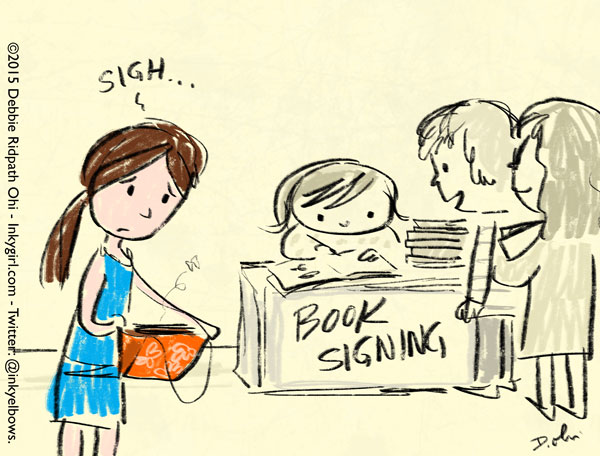
The quandary: You want to support someone's new book and as much as you'd like to buy it, you can't. Perhaps you can't justify the cost of the new book right now. Perhaps your author friend is prolific and has multiple books coming out, and you can't afford to get them all. Perhaps you have so many author and illustrator friends that if you tried to buy all their books, you'd need to sell your car first. Or your house.
Here are some other ways you can show support for an author's book:
First, read the book. How do you read it without buying it? Borrow it from the library. For picture books, you could even read the book AT the bookstore.
Reserve a copy at the library. At least at some libraries, this helps show the library that at least one person is interested in that book. If popular enough, the library may order more copies.
Review/rate the book. Post a rating and/or review in sites like Goodreads, LibraryThing, Amazon, BN.com or your own blog. If you didn't like the book, don't lie. Nilofer Merchant suggests using a phrase like "this book is not for you if you are xxx" because even this kind of negative review may help others know the book IS for them. Take a few extra minutes to browse the other reviews of the book and then (if the feature's available) Like the reviews that you did like or found helpful.
When you read the book, read it where people can see it. Not sure about the rest of you, but I'm always surreptitiously checking out the covers of books that people read in public. This is where print books have the advantage of digital. Read the book on public transit, in the park, on the beach, at the airport, while waiting in line. You never know when people will decide to check out the book just because they saw you enjoying it.
Recommend the book to others through social media. Including the book cover (either scoop the cover image from the publisher/author/illustrator website or photograph the book cover in the library or bookstore) especially helps. Even just a short "Loved this book!" along with the cover will be appreciated. You can make it even more personal by adding a reason why you loved it. Take the time to tag the author or illustrator; tagging not only alerts the author/illustrator to the post but it also encourages people to click your tag link to find out more about the person.
Share and retweet the author's or illustrator's posts. Be judicious -- don't share/retweet everything, especially if you tend to share/retweet a lot on your feed. To authors and illustrators: make sure your post is PUBLIC if you want it shared. I can't tell you the number of times I've started to share someone's FB post but then discovered that it's a Friends-Only post; even if I shared it, the only people who see it would be our shared friends who already have it in their feed. If you're confused, read this FB support page about how to control who sees your posts.
Post a photo of the book in the wild. Especially around launch time, I find that social media sometimes gets inundated with images of just the book cover. Make your post more personal by taking a selfie of you holding the author's book, or another reader with the book -- photos with people in them always get more Like-love. Or take a photo in a fun setting, like adding a cup of tea beside a picture book about a tea party, for example. Or if you see the book in your local bookstore or library, take a photo and tag the author or illustrator. I can't speak for other author/illustrators, of course, but I always appreciate when someone does this.
If the author or illustrator is on YouTube, subscribe to their channel so you can more easily find out when they upload new trailers or videos.
Talk about the book. Don't underestimate the power of word-of-mouth. Recommend the book to friends, work colleagues, your local bookseller and librarian. When a friend of mine recommends a book they personally like and think I'd like, too, I pay MUCH more attention than when I see a generic "this new book just came out, you should get it!" post on social media.
And meanwhile...
Whether or not you can afford to buy my book(s), THANK YOU SO MUCH to everyone who has supported me and my work! I really appreciate it.
Do you have other suggestions about how to support book authors and illustrators? Please post below.
Related Resources:
How To Support An Author's New Book: 11 Ideas For You - by Chuck Sambuchino on Writer Unboxed
How To Support An Author - by Nilofer Merchant
5 Quick Ways To Support Your Favorite Author - by Dorothy Wiley
How To Support An Author Beyond Buying Their Book - by Erin in Pub Crawl
Blog: TWO WRITING TEACHERS (Login to Add to MyJacketFlap)
JacketFlap tags: community, Add a tag
As the end of the year approaches, some of my colleagues have taken the time to acknowledge my efforts as their literacy coach. You see, I will not be returning to the school… Continue reading ![]()
Blog: Kid Lit Reviews (Login to Add to MyJacketFlap)
JacketFlap tags: Book Blast, Running Press Kids, Illustrator Spotlight, Perseus Books Group, Contests-Giveaways, adjusting to a move, Butterfly Park, Rlly MacKay, Children's Books, community, Picture Book, friendship, flowers, butterflies, Add a tag
Coming May 26th, from Running Press Kids:
Butterfly Park
by Award-Winning Author/Illustrator Elly MacKay
Running Press Kids is teaming up with select blogs to promote a very special picture book artist, Elly MacKay. Elly MacKay creates paper worlds inside a miniature lightbox theater, and turns those worlds into picture books. The images in her upcoming picture book, BUTTERFLY PARK, are nothing short of breathtaking. Let others know about Elly MacKay and her tour @Twitter: #ButterflyTrail
“Once there was a girl who loved butterflies. And when she moved to a new town, she felt lucky to find a place nearby called Butterfly Park! But when she opened the gate, there were no butterflies to be found.
“The girl tried to catch some butterflies and asked neighborhood children to help bring them to Butterfly Park. But to their disappointment, the butterflies didn’t stay. As the entire town got involved, they finally realized what they needed to do. Together, the girl and her community planted flowers in Butterfly Park, and in time, the butterflies came.” [publisher]
Running Press Kids has put together a special illustration tour, each Tuesday, leading up to the late May release date of Butterfly Park. Why an illustration tour, and not a “normal” book tour? MacKay used her acclaimed paper-cut artwork, giving each spread a 3-dimensional look. While knocking on neighbors’ doors, looking for help, the kids look like they could dance right off the page. Paper-cut art must be a tedious labor of love. The result is a magnificent picture book, with a final 4-page spread worthy of framing. The book jacket is also a poster of flowers that entice butterflies. To WIN YOUR OWN COPY of Butterfly Park, all it takes is a comment. Winner announced on Monday, May 11th.
Well, this is an image reveal, so here it is, the left half of spread number ten:
“Centered on the park’s elaborate art nouveau gateway, MacKay’s lyrical paper collage and diorama constructs feature layered details and out-of-focus backgrounds for a sense of depth. Brightly patterned butterflies, delicate flowers, and human figures pose like gracefully off-balance dancers…. Worthy of theme and equally pleasing to the eye and the spirit.”
~~Kirkus Reviews
“MacKay’s artwork recreates the feel and pleasure of Edwardian-era illustration, and lovers of picture book fantasy will embrace it.”
~~Publishers Weekly
Butterfly Park
Written and Illustrated by Elly MacKay
Published by Running Press Kids
978-0-7624-5339-9
May 26, 2015
38 pages Age 3 +
Also by Elly MacKay
..
..
..
..
..
..AWARDS
2014 Blue Spruce™ Award Nominee – Ontario Library Association
2013 Best Bets Top 10 Picture Books – Ontario Library Association
2013 Best Books List (preschool—early elementary) – Atlanta Parent Magazine
2014 Best Books of the Year (children—teens) – Amazon Canada
About Elly MacKay
Elly MacKay is the author and illustrator of If You Hold a Seed and Shadow Chasers. She attends Nova Scotia College of Art and Design, and now her artwork is sold around the world, including her Etsy.com shop, Theater Clouds.
Website: http://ellymackay.com
Facebook: http://facebook.com/theaterclouds
Twitter: @TheaterClouds
Here is the schedule for Ms. MacKay’s tour:
Butterfly Trail Blog Tour Page
4/07 The Unconventional Librarian http://bit.ly/TheUnconventionalLibrarian
4/14 The Geo Librarian http://bit.ly/TheGeoLibrarian
4/21 Mom Read It http://bit.ly/MomReadIt
4/28 Mother Daughter Book Reviews http://bit.ly/MotherDaughterBookReviews
5/05 Kid Lit Reviews ♥ YOU ARE HERE
5/12 Unleashing Readers http://bit.ly/UnleashingReaders
5/19 The Childrens Book Review http://bit.ly/TheChildrensBookReview
5/26 RELEASE DAY! Click to purchase Butterfly Park early
Pass this post on. Help Award-Winning-Author Elly MacKay get the word out about Butterfly Park: TWEET: #ButterflyTrail
Running Press is a member of the Perseus Books Group.
Twitter: @rp_kids
Filed under: Book Blast, Children's Books, Contests-Giveaways, Illustrator Spotlight, Picture Book Tagged: adjusting to a move, butterflies, Butterfly Park, community, flowers, friendship, Perseus Books Group, Rlly MacKay, Running Press Kids
Blog: The Open Book (Login to Add to MyJacketFlap)
JacketFlap tags: community, Lee & Low Likes, Book Lists by Topic, Holidays and Celebrations, lend a hand, poems about giving, rak week, rakweek2015, random acts of kindness week, poetry, kindness, john frank, volunteering, Musings & Ponderings, Dear Readers, infographic, london ladd, Add a tag
Monday kicked off Random Acts of Kindness Week, a time when people are encouraged to step out of their comfort zones and do something nice for others. Our picture book, Lend a Hand: Poems About Giving is a collection of poems about different ways to help others. From planting trees to tutoring students, Lend a Hand shows that there are lots of small things you can do to make a big difference in someone’s life.
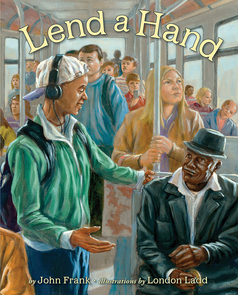
Here’s what reviewers are saying about Lend a Hand:
“At once familiar and slightly out of the box, these giving scenes gently suggest that even the smallest acts can inspire and achieve great ends.” –Kirkus Reviews
“In conjunction with home or classroom discussions about social responsibilities, waging peace, or bullying, these instances of individual and collective giving may serve as inspiring models.“–Booklist
“It would be easy for a book with this title to hit readers over the head with its message. Instead, this is a gentle book that will add value to any classroom or library collection.” –School Library Journal
In honor of Random Acts of Kindness Week, we’re offering a 25% off coupon which you can use through February 15. When you’re checking out, use the code KINDNESS. Purchase the book here.
Struggling to think of some ways to celebrate Random Acts of Kindness Week? Here are ten ways to lend a hand:
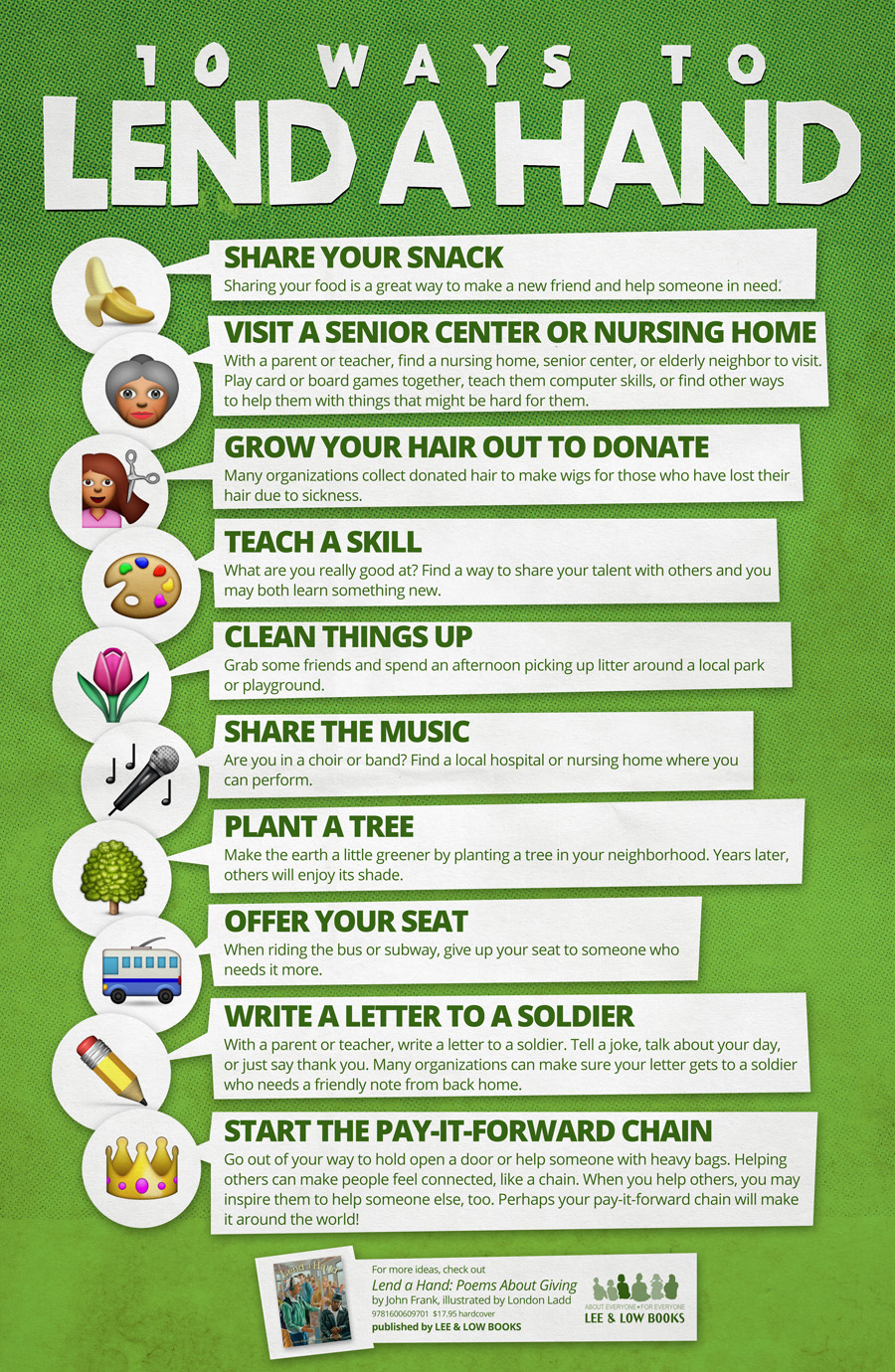
We’d love to hear what you’ve been doing for Random Acts of Kindness Week – let us know in the comments below!
Blog: Sylvan Dell Publishing's Blog (Login to Add to MyJacketFlap)
JacketFlap tags: Bangladesh, Community, Cuba, Canada, China, Australia, India, Istanbul, Indonesia, Zambia, Add a tag
It’s in the grip of North American winter that I often dream of escape to warmer climates. Thanks to the WordPress.com Reader and the street photography tag, I can satisfy my travel yen whenever it strikes. Here are just some of the amazing photos and photographers I stumbled upon during a recent armchair trip.
My first stop was Alexis Pazoumian’s fantastic SERIES: India at The Sundial Review. I loved the bold colors in this portrait and the man’s thoughtful expression.
Speaking of expressions, the lead dog in Holly’s photo from Maslin Nude Beach, in Adelaide, Australia, almost looks as though it’s smiling. See more of Holly’s work at REDTERRAIN.
In a slightly different form of care-free, we have the muddy hands of Elina Eriksson‘s son in Zambia. I love how his small hands frame his face. The gentle focus on his face and the light in the background evoke warm summer afternoons at play.
Heading to Istanbul, check out Jeremy Witteveen‘s fun shot of this clarinetist. Whenever I see musicians, I can’t help but wonder about the song they’re playing.
Pitoyo Susanto‘s lovely portrait of the flower seller, in Pasar Beringharjo, Yogyakarta, Indonesia, captivated me. Aren’t her eyes and her gentle smile things of beauty?
Arresting in a slightly different fashion is Rob Moses‘ Ski Hill Selfie, taken in Calgary, Alberta, Canada. The juxtaposition of the bold colors and patterns in the foreground against the white snow in the background caught my eye.
Further under the category of fun juxtaposition, is Liu Tao’s photo of the elderly man in Hafei, China, whose fan reminds me of a punk rock mohawk.
From Hafei, we go to Havana, Cuba, and Edith Levy‘s beautifully ethereal Edificio Elena. I found the soft pastels and gentle shadows particularly pleasing. They lend a distinctly feminine quality to the building.
And finally, under the category of beautiful, is Aneek Mustafa Anwar‘s portrait, taken in Shakhari Bazar, Old Dhaka, Bangladesh. The boy’s shy smile is a wonderful representation of the word on his shirt.
Where do you find photographic inspiration? Take a moment to share your favorite photography blogs in the comments.
Filed under: Community
Blog: Worth the Trip (Login to Add to MyJacketFlap)
JacketFlap tags: Community, Mobile, Blogging Tips, Dashboard, Better Blogging, blogging u., 2015, Add a tag
The beginning of a new year is an opportunity to start things afresh — why should your blog not benefit as well? Here are six things you can do to start your blogging in 2015 energized, recharged, and focused.
Explore your new dashboard
We introduced several major upgrades to the WordPress.com dashboard right before the end of last year, including updated Stats and navigation and the ability to manage and edit all your content across sites from one central hub.
Now is the perfect time to get familiar with some of these new features for a smoother blogging experience. Whether it’s from your computer, tablet, or smartphone, you can check out which posts generated the most likes and comments (and much more) on your Stats page, browse through all your posts and pages, and easily tweak your account settings, review your billing history, and visit your trophy case from My Profile.
Sign up for a blogging course
Our free Blogging U. courses are a great way to get you closer to meeting your blogging goals — whatever those might be — while being part of a supportive, engaged community.
Our next Blogging 101 course starts January 5, and is geared toward new bloggers (you can read more about it, and sign up for it, here), but throughout the year we’ll be offering courses that target different levels, and focus on topics like writing, photoblogging, and more. Be sure to follow announcements from The Daily Post to stay up to date on upcoming courses.
Spruce up your site
Bloggers who love their site’s design publish more. Make sure your site’s look matches the quality of your posts with a few easy tweaks, like switching themes (there are some gorgeous new ones in our Showcase, from our annual default theme, Twenty Fifteen, to recent favorites Editor and Plane). Or just customize your current theme to meet your needs — a few simple touches, like a custom header image or personalized image widgets, can give your site a distinct look with very little work. (Need inspiration? Check out our customization and Early Theme Adopters posts.)
Join a blogging event
Becoming active in the blogging community (or at least in a blogging community) can make all the difference between posting sporadically on a near-dormant blog and keeping yourself energized and your audience engaged. There’s so much to choose from: browse our searchable event listings to find one that’s up your alley, or share your work on our weekly photo challenges and Community Pool posts.
Feeling more adventurous? Consider attending a blogging confernece or creating your own blogging workshop.
Create an editorial calendar
Whether your vision for your blog is to publish once a month or twice a day, your chances of sticking with a regular publication pace increase if you make concrete, sustainable plans. Devoting a little time every few weeks to sketch out an editorial calendar for your blog will help you allocate time, decide on your priorities, and give you the flexibility you need in case unexpected developments keep you away from your blog for a while.
Download our mobile app
Being on the move should never prevent you from publishing a post, engaging in conversations and moderating comments, or keeping up with the latest from your favorite bloggers. With our mobile apps — available for iOS and Android — you can do all of those things wherever you are. You no longer need to wait to get back home to make your voice heard.
Happy 2015 from the entire WordPress.com team! May it be a wonderful year for you and your sites.
Filed under: Better Blogging
Blog: Worth the Trip (Login to Add to MyJacketFlap)
JacketFlap tags: WordPress, Indianapolis Monthly, WordPress.com, longreads, grantland, jia tolentino, best of wordpress, adult magazine, boogie nights, jake threadgould, larry bird, Mark Wahlberg, Howie Kahn, Community, Reading, marketplace, Add a tag
Here’s more great reading for you: five stories we love from across all of WordPress.
1. Spaces of Freedom in Iran
An account of one traveler’s stay in Iran:
On my second night in Iran I was invited to a party in a middle-class area of Tehran. Since we were a mixed gendered group with a foreigner (yours truly) in their midst, we had to be reasonably inconspicuous when we stepped out of the car and onto the street. As soon as we stepped over the threshold of the house, however, we were no longer in the Islamic Republic.
2. Livin’ Thing: An Oral History of Boogie Nights
Alex French and Howie Kahn, Grantland
The full story of how Paul Thomas Anderson created his first masterpiece—and turned Mark Wahlberg into a movie star.
3. York & Fig
An examination of how the neighborhood of Highland Park in Los Angeles is quickly gentrifying. The team at Marketplace interviewed current and former residents, business owners, and investors and developers to paint a full picture of what’s occurring.
4. Cheerleaders for Christ
“I tell people all the time I never really drank the water, but of course that’s not totally true.” Recollections of a former cheerleader at a Texas private school attached to a Baptist megachurch.
5. Larry Bird’s Greatest Shot Was the One He Didn’t Take
Michael Rubino, Indianapolis Monthly

How basketball great Larry Bird almost walked away from the game.
You can find our past collections here—and you can follow Longreads on WordPress.com for more daily reading recommendations.
Publishers, writers, share links to your favorite essays and interviews (over 1,500 words) on Twitter (#longreads) and on WordPress.com by tagging your posts longreads.
Filed under: Community, Reading, WordPress, WordPress.com
Blog: Liz Carmichael's Portal (Login to Add to MyJacketFlap)
JacketFlap tags: Community, Reading, wired, Time Magazine, Washington Post, WordPress, Shenandoah, Boston Magazine, WordPress.com, longreads, Hannah Richell, the walrus, best of wordpress, Ed Odeven Reporting, Add a tag
We’re back with a new collection of our favorite stories from across all of WordPress.
1. Books for the Broken-Hearted
Hannah Richell
Hannah Richell’s husband Matt was killed in a surfing accident in July. In a recent post, Richell writes about finding comfort in reading words written by people who have also experienced the shock of losing a loved one — people like Joan Didion, C.S. Lewis, and Cheryl Strayed.
2. The Shame of Poor Teeth in a Rich World
Sarah Smarsh, Aeon
An essay about growing up poor in America, and the role of teeth as a class signifier.
3. Giving Up the Ghost
Lynn Cunningham, The Walrus
Lynn Cunningham smoked cigarettes for fifty years before making a decision to quit and get help by visiting the Mayo Clinic’s Nicotine Dependence Center in Minnesota.
4. The Laborers Who Keep Dick Pics and Beheadings Out of Your Facebook Feed
Adrian Chen, Wired
Adrian Chen travels to the Philippines, where he meets the employees who work for content moderation companies that scrub objectionable content from social media sites.
5. ‘Before I Write a Word, I Need to Know Clearly What I Want to Say’
Ed Odeven Reporting
An interview with Baltimore-based author and sportswriter John Eisenberg.
6. Talking Shit about Hemingway and Thoreau with ‘The Toast’ Founder and ‘Texts From Jane Eyre’ Author Mallory Ortberg
Elisabeth Donnelly, Flavorwire
The beautiful thing about Texts From Jane Eyre, based on Ortberg’s original column for The Hairpin, is that it offers exactly what it says on the cover: the Western canon is parodied and spoofed through the silly modern invention of texting. Ortberg’s comedy is shot through with love and deep literary knowledge, highlighting the silly and outrageous subtext bubbling under classics from Lord Byron to Nancy Drew. It’s hilarious, wickedly smart work that also serves as a fantastic reading list.
7. Pot Kids
Kate Pickert, Time Magazine
Inside the quasi-legal science-free world of medical marijuana for kids.
8. On Modesty
Anna Vodicka, Shenandoah
An essay about modesty that recalls the author’s girlhood in a conservative community and challenges the mixed messages of women as both “Eve” and “Jezebel.”
9. One of Us
Jennifer J. Roberts, Boston Magazine
Memories of being a Southie kid and black in a mostly white neighborhood in Boston.
10. An American Dream Deferred
Eli Saslow, Washington Post
Pulitzer Prize-winning reporter Eli Saslow profiles Javier Flores, an undocumented immigrant who was hoping that an executive action by President Obama would prevent him from being deported to Mexico and forced to leave his wife and U.S.-born children behind in Ohio. Flores is now in La Mixtequita, Mexico, with few options to reunite with his family.
As always, you can find our past collections here. You can follow Longreads on WordPress.com for more daily reading recommendations, or subscribe to our free weekly email.
Publishers, writers: You can share links to your favorite essays and interviews (over 1,500 words) on Twitter (#longreads) and on WordPress.com by tagging your posts longreads.
Filed under: Community, Reading, WordPress, WordPress.com
Blog: paperwork (Login to Add to MyJacketFlap)
JacketFlap tags: The Arts Center, community, sewing, animals, characters, bird, fabric, making, Add a tag
Blog: La Bloga (Login to Add to MyJacketFlap)
JacketFlap tags: gentrification, gentry, Northside, Chicano barrio, northside gentrification, community, highlands, Denver, Add a tag
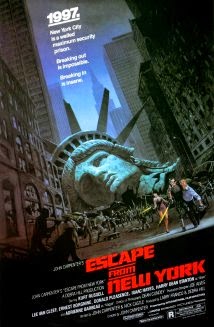
In John Carpenter's ancient 1981 film Escape from New York, convicted bank robber Snake Plissken (Kurt Russell) is sent into futuristic 1997 to rescue the US President from Manhattan, which by 1997 is a gigantic max-security prison. The film was called sci-fi, but today's gentrified Manhattan or San Francisco or Denver makes the film alternate history, a future not based in reality.
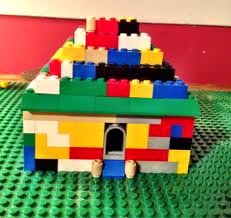 |
| A Highlands developer's dream |
 |
| A home the developers didn't raze |
 |
| A home, not an investment |
 |
| Really--you'd want to live in this? |
 |
| Kurt can't save us from Highlands |
 |
| Architecture: Highlands-ugly |
 |
| You buy this, you breathe the chems |
This month in the Denver Post, Fine Arts Critic Ray Mark Rinaldi published "Did diversity miss the train in Union Station's architecture?" (The place is only ten minutes from my house.) The whole article is worth reading, but here's a sample:
 |
| Not Union Station; just big Lego |
"The urban playground at Union Station isn't drawing people of color and it may be the building's fault. Walking through the station, it doesn't look at all like Denver in 2014. More like Denver in 1950, Boise, Idaho, or Billings, Mont. If, that is, you are white and not paying attention. Or if you think diversity doesn't matter. If you do, you can't help but feel like something is off amidst all the clinking of martini glasses. If you are a tourist, you might get the idea that Denver doesn't have people of color. Or worse, you might think it's one of the most segregated cities in the U.S. That's not the case.
 |
| Highlands next improvement? |
 The Northside that's become the developers' and gentry's Highlands is a great candidate for a new Darwin Award for City Suicide. Already the signs of super-congestion, unflavored architecture and an unaffordable lifestyle and life have settled over my neighborhood like a new Brown Cloud. It didn't and doesn't have to be that way. Richer, whiter neighborhoods were inoculated from turning into Legoland. For instance, there's the Bonnie Brae Neighborhood Association whose zoning committee reviews all zoning requests. It's one of the most charming, coveted, million-dollar-homes areas in the West. Take note developers--of million-dollar-homes. Not made of cheap, toxic OSB or intended to look like Legos. And how about some solar?
The Northside that's become the developers' and gentry's Highlands is a great candidate for a new Darwin Award for City Suicide. Already the signs of super-congestion, unflavored architecture and an unaffordable lifestyle and life have settled over my neighborhood like a new Brown Cloud. It didn't and doesn't have to be that way. Richer, whiter neighborhoods were inoculated from turning into Legoland. For instance, there's the Bonnie Brae Neighborhood Association whose zoning committee reviews all zoning requests. It's one of the most charming, coveted, million-dollar-homes areas in the West. Take note developers--of million-dollar-homes. Not made of cheap, toxic OSB or intended to look like Legos. And how about some solar? |
| Old Northside home, family-friendly |
Blog: Worth the Trip (Login to Add to MyJacketFlap)
JacketFlap tags: Community, Reading, wired, WordPress, cincinnati magazine, WordPress.com, longreads, grantland, quartz, best of wordpress, Los Angeles Magazine, bklynr, grant wiggins, mehreen kasana, Add a tag
Here it is! A new collection of our favorite stories from across all of WordPress.
As always, you can find our past collections here. You can follow Longreads on WordPress.com for more daily reading recommendations, or subscribe to our free weekly email.
Publishers, writers, you can share links to your favorite essays and interviews (over 1,500 words) on Twitter (#longreads) and on WordPress.com by tagging your posts longreads.
1. What Happens When a Veteran High School Teacher Becomes a Student for the Day
“I waited fourteen years to do something that I should have done my first year of teaching: shadow a student for a day.” A high school teacher learns some sobering lessons about how kids experience a typical day — and the amount of sitting required.
2. No Apology
The truth about being Muslim in America:
In the eyes of those perpetually seeking an apology from Muslims, I am a Bad Muslim. I don’t put hashtag-suffixed apologies online for what someone else of my faith does. When 9/11 happened, I was as shocked and terrified as anyone else was. We scary-looking Muslims experience human emotions, too. … We Muslims react to unexpected loss of life like any non-Muslim would. We cry, we mourn.
3. The Rise and Fall of Public Housing in NYC
A “subjective overview” of the history of public housing in New York City from the novelist Richard Price, framed through the lens of his own upbringing in the North Bronx’s Parkside Houses.
4. Ways Men In Tech Are Unintentionally Sexist
Kat Hagan, This Is Not a Pattern
How our behavior and language can have a harmful impact — and how we can fix it. “Small, simple changes will build the foundation for a better tech culture.”
5. Gone Girls: Human Trafficking on the Home Front
Mike Kessler, Los Angeles Magazine
Kessler talks to survivors of child prostitution, as well as law enforcement officers, judges, politicians, and advocates working to prevent the sex trafficking of minors.
6. The Evans Family Is Living in This World
Linda Vaccariello, Cincinnati Magazine
A community comes together to help a family after a tragedy:
“The reality hit me like nothing I’d ever experienced,” McDonald says. “She had no one. I couldn’t imagine what that was like.” McDonald went to Ao, threw her arm around the sobbing woman’s shoulders, and said, “We’ll help you.”
7. The Plunge
The story of Shavarsh Karapetyan, a Soviet swimming champion who dove into Armenia’s Lake Yerevan and saved dozens of lives from a sinking trolleybus.
8. How Pixar’s Gurus Brought the Magic Back to Disney Animation
A profile of John Lasseter and Ed Catmull, whose intense focus on storytelling helped revive Disney’s animation studio with hits like Frozen and Wreck-It Ralph.
9. ‘I Am Darren Wilson’: St. Louis and the Geography of Fear
Sarah Kendzior & Umar Lee, Quartz
St. Louis is a city long on the run from itself. White flight has spread from suburbia to exurbia, while decades of black demands — for better jobs, better schools, better treatment—go unheeded. This is a region deprived of resources, forcing residents to scrounge for more fertile terrain.
10. Stephen Powers Puts the Writing on the Wall
From the magazine Bklynr, a profile of the street artist behind some of Brooklyn’s most recognizable murals.
Photo: dystopos, Flickr
Filed under: Community, Reading, WordPress, WordPress.com
Blog: Fire It Up! (Login to Add to MyJacketFlap)
JacketFlap tags: Community, Reading, wired, WordPress, cincinnati magazine, WordPress.com, longreads, grantland, quartz, best of wordpress, Los Angeles Magazine, bklynr, grant wiggins, mehreen kasana, Add a tag
Here it is! A new collection of our favorite stories from across all of WordPress.
As always, you can find our past collections here. You can follow Longreads on WordPress.com for more daily reading recommendations, or subscribe to our free weekly email.
Publishers, writers, you can share links to your favorite essays and interviews (over 1,500 words) on Twitter (#longreads) and on WordPress.com by tagging your posts longreads.
1. What Happens When a Veteran High School Teacher Becomes a Student for the Day
“I waited fourteen years to do something that I should have done my first year of teaching: shadow a student for a day.” A high school teacher learns some sobering lessons about how kids experience a typical day — and the amount of sitting required.
2. No Apology
The truth about being Muslim in America:
In the eyes of those perpetually seeking an apology from Muslims, I am a Bad Muslim. I don’t put hashtag-suffixed apologies online for what someone else of my faith does. When 9/11 happened, I was as shocked and terrified as anyone else was. We scary-looking Muslims experience human emotions, too. … We Muslims react to unexpected loss of life like any non-Muslim would. We cry, we mourn.
3. The Rise and Fall of Public Housing in NYC
A “subjective overview” of the history of public housing in New York City from the novelist Richard Price, framed through the lens of his own upbringing in the North Bronx’s Parkside Houses.
4. Ways Men In Tech Are Unintentionally Sexist
Kat Hagan, This Is Not a Pattern
How our behavior and language can have a harmful impact — and how we can fix it. “Small, simple changes will build the foundation for a better tech culture.”
5. Gone Girls: Human Trafficking on the Home Front
Mike Kessler, Los Angeles Magazine
Kessler talks to survivors of child prostitution, as well as law enforcement officers, judges, politicians, and advocates working to prevent the sex trafficking of minors.
6. The Evans Family Is Living in This World
Linda Vaccariello, Cincinnati Magazine
A community comes together to help a family after a tragedy:
“The reality hit me like nothing I’d ever experienced,” McDonald says. “She had no one. I couldn’t imagine what that was like.” McDonald went to Ao, threw her arm around the sobbing woman’s shoulders, and said, “We’ll help you.”
7. The Plunge
The story of Shavarsh Karapetyan, a Soviet swimming champion who dove into Armenia’s Lake Yerevan and saved dozens of lives from a sinking trolleybus.
8. How Pixar’s Gurus Brought the Magic Back to Disney Animation
A profile of John Lasseter and Ed Catmull, whose intense focus on storytelling helped revive Disney’s animation studio with hits like Frozen and Wreck-It Ralph.
9. ‘I Am Darren Wilson’: St. Louis and the Geography of Fear
Sarah Kendzior & Umar Lee, Quartz
St. Louis is a city long on the run from itself. White flight has spread from suburbia to exurbia, while decades of black demands — for better jobs, better schools, better treatment—go unheeded. This is a region deprived of resources, forcing residents to scrounge for more fertile terrain.
10. Stephen Powers Puts the Writing on the Wall
From the magazine Bklynr, a profile of the street artist behind some of Brooklyn’s most recognizable murals.
Photo: dystopos, Flickr
Filed under: Community, Reading, WordPress, WordPress.com
Blog: Perpetually Adolescent (Login to Add to MyJacketFlap)
JacketFlap tags: community, Book News, work, Family, resilience, Australia, Resource, fathers, New Book Releases, unity, Book Reviews - Childrens and Young Adult, Ann-Marie Finn, Dragon Tales Publishing, Jo Emery, My Dad is a FIFO Dad, Add a tag
My Dad is a FIFO Dad Written by Jo Emery Illustrated by Ann-Marie Finn Published by Dragon Tales Publishing Brand new and hot off the press, and already sold out on the first print-run is the popular, My Dad is a FIFO Dad! My Dad is a FIFO Dad was written by Queenslander, Jo Emery, […]
Add a CommentBlog: TWO WRITING TEACHERS (Login to Add to MyJacketFlap)
JacketFlap tags: community, school climate, Classroom Environment, Add a tag
Inspired by a story about a brave high school student, I left a positive post-it note for each teacher I worked with earlier this week.![]()
Blog: Fire It Up! (Login to Add to MyJacketFlap)
JacketFlap tags: Community, Resources, traffic, branding, Growth, Better Blogging, building traffic, blogging u., Blogging 201, Add a tag
Blogging 201: Branding and Growth starts Monday, October 20. If you’re a recent alum of Blogging 101 looking to build on the skills you’ve developed so far, or a blogger looking for new ways to grow your site and its audience, this is the course for you.
What will Blogging 201 cover? We’ll introduce tools to increase your traffic within WordPress.com as well as through other platforms, discuss ways to develop a coherent, effective brand for your blog, and show how to use your archives and your site’s stats to build your readership.
During this two-week course we’ll give you a daily task and provide you with all the necessary resources and information to complete it (there will be no new tasks on weekends, to give you time to explore more on your own, or just publish a post or two). You’ll also have access to The Commons, a private, staff-moderated space where you can chat with other participants, ask questions, and give feedback.
Ending right before NaNoWriMo and NaBloPoMo kick off in November, Blogging 201: Branding and Growth will help you get your site ready for a new wave of viewers — as well as to keep them coming after their first visit.
Like all Blogging U. courses, there are no prerequisites for Blogging 201 (if you’d like to follow the courses in sequence, though, that’s fine: Blogging 101: Zero to Hero will be back in November!). Self-hosted blogs and blogs from other platforms are just as welcome to participate.
If this sounds like something you’d be interested in trying, sign up for Blogging 201: Branding and Growth using this form:
Take Our SurveyFiled under: Better Blogging, Community, Resources
View Next 25 Posts







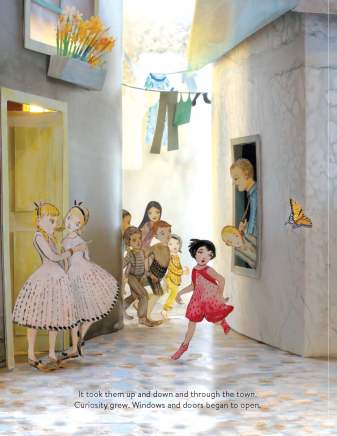





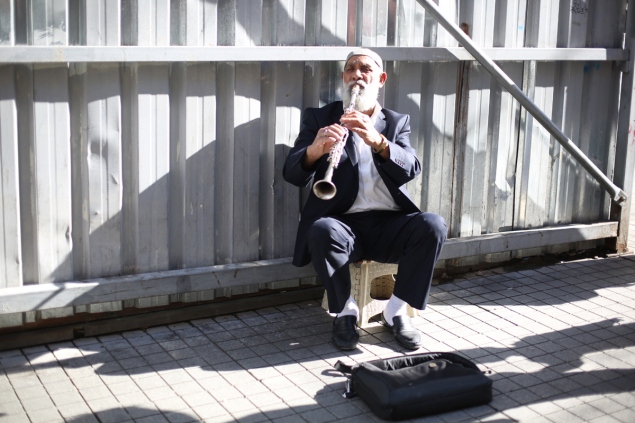





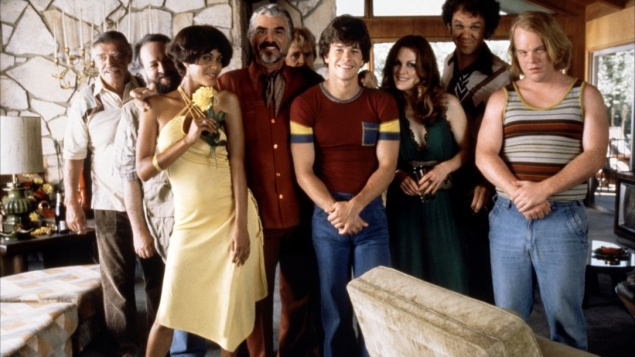


This from one of our readers: For An Act of Kindness I’d like to suggest write a letter to a child in a refugee camp or a thank you letter to your favorite teacher rather than a letter to a soldier. Corporate media and the military already do more than enough to idolize soldiers.
Thanks!
Desiree Fairooz
Youth Services Librarian
Columbia Pike Branch
Arlington Public Library